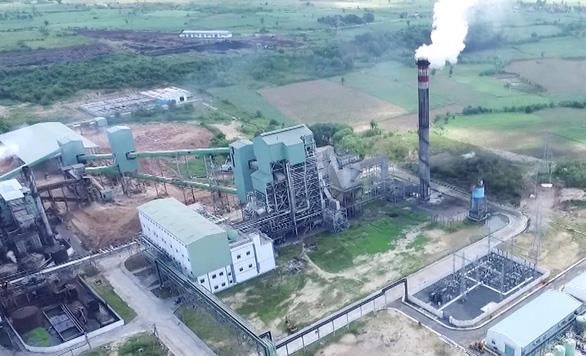 Society
Society


|
| A power plant uses bagasse from a sugar factory to produce electricity in Phú Yên Province. — Photo tuoitre.vn |
PHÚ YÊN — More than 10,000 sugarcane–farm households in the central province of Phú Yên are earning higher profits thanks to the use of bagasse from a sugar factory to produce electricity.
The factory owned by KCP Vietnam Industries Limited (KCP VIL) has bought sugarcane from farmers in the province at a price VNĐ100,000 (US$4.3) per tonne higher than the market rate.
Many sugarcane farmers in the country have turned to grow cassava because of the low price of sugarcane.
Gia Lai and Phú Yên provinces are among the localities with the largest areas of sugarcane in the country, with more than 60,000ha.
In mid-March, the market price of raw sugarcane was VNĐ720,000 to 760,000 ($31-33) per tonne.
However, sugarcane farmers in Phú Hòa, Sơn Hòa and Đồng Xuân districts in Phú Yên Province are selling their product for VNĐ820.000-860.000 ($35.3-37) per tonne.
Rơ Chăm Y Nem, a sugarcane farmer in Sơn Hòa District, told Tuổi Trẻ (Youth) newspaper that he had sold 40ha of sugarcane to KCP VIL for VNĐ840,000 ($36.2) per tonne.
“Fertiliser is given to sugarcane farming households that have signed supply contracts with the company,” a farmer in the district, Đặng Văn Sâm, said.
The company is also offering VNĐ3.5 million ($150) each to farming households that do not currently grow sugarcane if they switch to the crop.
K.V.S.R. Subbaiah, general director of KCP VIL, told Tuổi Trẻ newspaper that his company produces both sugar and biomass electricity.
Built in 2016 with a total investment of $23 million, the 30MW biomass power plant needs about 300,000 tonnes of bagasse a crop (around four months worth).
In 2017, it supplied more than 49 million Kwh of electricity and reached 108 million Kwh of electricity last year, generating power for the national power grid.
“With revenue from selling electricity to Electricity of Việt Nam (EVN), the company shares its profit with farmers to help them plant sugarcane,” he said.
The renewable energy supply from the KCP VIL biomass power plant contributes to 10 per cent of the province’s energy use, according to Thái Minh Châu, director of the provincial power company.
“This power source is very important to ensure energy security, and to meet increased power demand as well as insufficient power in the dry season,” he said.
The sugar factory has been using bagasse for three years, the deputy chairman of provincial People’s Committee, Trần Hữu Thế, said.
“While many sugar producers are facing difficulties with low prices and farmers in other localities have left sugarcane farming to switch to cassava, farmers in Phú Yên Province are growing lots of sugarcane thanks to purchasing contracts with KCP VIL,” he said.
The model is expected to help develop the country’s sugarcane industry and compete with rivals such as Thailand, he added.
The province plans to organise a workshop to propose increasing the price of power that uses bagasse to encourage sugar companies to invest in biomass power plants.
Production of power using biomass is not new to Việt Nam, but the price is low, so investors are not interested, Subbaiah said.
In Thailand, biomass electricity produced from bagasse at sugar mills sells for around 13 US cents per kWh, while the EVN buys it at VNĐ1,220 (5.8 US cents) per kWh from KCP VIL, he said.
“We have repeatedly petitioned the Government to increase the purchasing price of biomass electricity to encourage businesses to invest in biomass power plants. This would help the domestic sugar industry.”
Việt Nam’s energy demand and biomass electricity prices are expected to increase, so the company plans to build one more biomass power plant with a designed capacity of 30MW.
However, the construction of a new biomass power plant will depend on preferential policies. — VNS